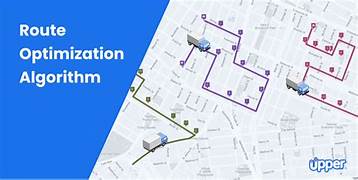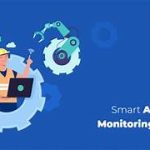AI in Optimizing Public Transportation Routes
Public transportation plays a crucial role in urban life, providing millions of people with a means to travel to work, school, and other destinations. Efficient and reliable public transit systems can significantly reduce traffic congestion, lower emissions, and improve the overall quality of life for city residents. However, designing and maintaining optimal routes for public transportation can be challenging. Factors such as changing traffic patterns, passenger demand, and the need for timely service all require continuous monitoring and adjustment.
In recent years, artificial intelligence (AI) has emerged as a transformative force in optimizing public transportation routes. By leveraging AI, cities can analyze vast amounts of data, predict demand fluctuations, and make real-time adjustments to ensure that transportation systems operate more efficiently, cost-effectively, and sustainably. This article delves into how AI is revolutionizing the management of public transit routes and the benefits it brings to both commuters and transit authorities.
The Role of AI in Public Transportation
AI in public transportation refers to the use of machine learning, data analytics, and other intelligent technologies to manage and optimize transit systems. By analyzing data from a variety of sources, AI systems can offer insights into how transportation networks can be optimized for efficiency, safety, and convenience.
Public transportation systems generate large amounts of data every day, from vehicle tracking information to passenger counts and traffic conditions. AI models can analyze this data in real-time to predict demand, optimize schedules, and adjust routes dynamically to meet the needs of passengers. This capability is especially crucial in today’s fast-paced urban environments, where populations are growing, and transportation systems must adapt quickly to changing circumstances.
Key AI Technologies Used in Public Transportation Route Optimization
1. Machine Learning and Predictive Analytics
One of the most valuable AI technologies used in optimizing public transportation routes is machine learning. Machine learning algorithms can be trained on historical data to predict patterns in passenger demand, traffic flow, and other variables. These predictions can then be used to optimize routes, adjust schedules, and allocate resources more effectively.
For example, AI can analyze historical ridership data to predict peak travel times for specific routes, enabling transit authorities to adjust schedules and allocate more buses or trains during periods of high demand. This can help reduce overcrowding and ensure that passengers can get to their destinations on time.
Predictive analytics can also help identify emerging trends, such as an increase in demand for certain routes due to population growth or changes in the urban landscape. By recognizing these patterns early, transit authorities can proactively adjust routes and services to accommodate these shifts.
2. Real-Time Data Integration
In addition to historical data, real-time data plays a vital role in optimizing public transportation. AI systems can integrate data from GPS trackers, traffic sensors, and other sources to monitor current conditions on roads and transit lines. This real-time data allows AI to make immediate adjustments to routes, vehicle speeds, and schedules.
For instance, if a traffic accident causes a major delay on a bus route, AI can instantly re-route vehicles to avoid the area and reduce delays. Similarly, if a train line experiences a delay, AI can reroute buses or other forms of transportation to fill the gap, ensuring that commuters aren’t stranded or faced with long waits.
3. Dynamic Routing Algorithms
Dynamic routing algorithms are another critical AI application in public transportation. These algorithms enable transit systems to make real-time adjustments to routes based on changing conditions such as traffic, passenger demand, and vehicle availability.
For example, AI can analyze data from smartphones and other sources to detect crowding levels on buses or trains in real time. If a particular vehicle is becoming overcrowded, the AI system can reroute another vehicle to pick up passengers, balancing the load across the fleet and preventing overcrowding on specific routes.
Additionally, AI can help optimize bus and train schedules based on traffic patterns, ensuring that vehicles travel at the optimal speed for minimal delays. By adjusting routes dynamically based on real-time conditions, AI can improve the efficiency of public transportation and make it a more attractive option for commuters.
Benefits of AI in Public Transportation Route Optimization
1. Increased Efficiency
One of the primary benefits of using AI in public transportation is increased efficiency. Traditional transit systems often operate on fixed schedules and routes, which may not always align with real-time demand. AI-driven optimization can help ensure that resources are allocated where they are needed most, reducing wasted fuel, minimizing delays, and improving the overall flow of the transportation network.
By leveraging predictive analytics and dynamic routing, AI can help reduce operational costs while maintaining or improving service levels. For instance, AI can identify underutilized routes and recommend service reductions or schedule adjustments, freeing up resources to focus on higher-demand routes.
2. Reduced Congestion and Delays
Public transportation routes can often become congested, especially during rush hours. AI can help alleviate congestion by predicting peak travel times and adjusting schedules accordingly. This can help reduce crowding on buses and trains, ensuring a more comfortable experience for passengers.
AI-driven route optimization also minimizes delays by ensuring that buses, trains, and other vehicles avoid traffic bottlenecks and congestion. By rerouting vehicles in real time based on traffic conditions, AI can help reduce the time commuters spend waiting for or traveling on public transit.
3. Improved Customer Experience
Passenger satisfaction is a critical factor in the success of any public transportation system. AI-driven optimizations help ensure that transportation services are punctual, efficient, and comfortable, leading to a better overall experience for commuters.
For example, AI can monitor crowd levels and adjust the frequency of buses or trains to prevent overcrowding, improving passenger comfort. Additionally, AI can provide real-time updates to passengers about delays, route changes, and estimated arrival times, enabling them to make informed decisions about their travel.
4. Environmental Benefits
AI can also contribute to sustainability efforts by optimizing the use of public transportation resources. By reducing the number of empty buses on the road and minimizing fuel consumption through more efficient routing, AI helps reduce the overall carbon footprint of the transportation system.
In addition, AI can encourage the use of public transportation over private cars by making transit services more reliable and convenient. This shift can contribute to a reduction in traffic congestion, air pollution, and greenhouse gas emissions, all of which are key factors in addressing climate change.
5. Cost Savings
By improving efficiency and reducing congestion, AI-driven route optimization can lead to significant cost savings for public transportation authorities. Fuel consumption can be reduced by optimizing vehicle routes and schedules, while maintenance costs can be lowered by minimizing wear and tear on vehicles.
Furthermore, AI can help optimize staffing levels, ensuring that resources are used efficiently without overstaffing or understaffing. These cost savings can be reinvested into improving the quality of service, expanding routes, or integrating new technologies.
Challenges and Considerations
While the benefits of AI in public transportation are clear, there are several challenges and considerations that must be addressed:
1. Data Privacy and Security
AI relies on large amounts of data, including real-time location tracking and passenger behavior data. This raises concerns about data privacy and security, particularly if sensitive information is collected without proper safeguards. Transit authorities must ensure that data is anonymized and protected from unauthorized access.
2. Implementation Costs
Implementing AI-based optimization systems requires significant upfront investment in technology, infrastructure, and training. Smaller cities or transit authorities with limited budgets may find it difficult to adopt these technologies, although the long-term benefits may justify the initial costs.
3. Integration with Existing Systems
Integrating AI into existing public transportation systems can be complex, especially if the infrastructure is outdated or not designed to accommodate advanced technologies. Coordination between various stakeholders, including transit agencies, local governments, and technology providers, is essential for successful implementation.
Conclusion
AI is transforming the way cities approach public transportation route optimization. By harnessing the power of machine learning, predictive analytics, and dynamic routing algorithms, cities can make public transportation more efficient, cost-effective, and responsive to passenger needs. The benefits of AI in public transit include improved efficiency, reduced congestion, enhanced customer satisfaction, and environmental sustainability.
While challenges such as data privacy, implementation costs, and system integration must be addressed, the potential for AI to revolutionize public transportation is undeniable. As cities continue to grow and urban populations increase, AI will play an increasingly important role in shaping the future of urban mobility, ensuring that public transit systems are capable of meeting the demands of modern cities.


